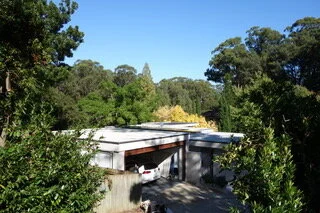In this guest post Phil Lloyd gives the reasons and facts for his solar and battery choices at his house in Sydney, NSW.
Motivation
I think it is important to be aware of what was my driving motivation to install a system in the first place.
In 2015, my wife contracted ovarian cancer stage 3 and I became her carer. We moved into our current home in 2016. Neryl's illness meant while she has been in remission since the chemotherapy, she feels the heat terribly as a result of the drugs she is on. The house we moved into didn’t have air conditioning so this was a priority for installation.
So my logic was that if we are going to dramatically increase our carbon footprint, the least we could do would be to install a solar system. Many of my friends would say how much did it cost and what is the ROI, I would say a lot and I have no idea. If they pressed further, I could quote the financial outlay and the ROI is that we are paying it forward for the next generation. So it’s a green decision making framework not a financial one.
• We are on a battle axe block with a steep driveway down from the main road
Holistic Approach
When your approach is to reduce your carbon footprint, you look at everything you can do to minimise your energy consumption.
These included:
• Installation of energy efficient white goods- Dishwasher, Washing Machine, Dryer.
• Conversion of lighting to LED.
• Conversion of Pool pump
• Change in behaviour. All appliances used during middle of the day through timers etc to ensure maximum utilization of pumps.
• Pool Blanket installed
• Battery installed
• Removal of bar fridge
• Roof, You can see the panels are in shade. There is one large tree that blocked the panels, however, when this shot was taken 0.5 kw was being generated. The battery had been charged for about 30 minutes prior to the shade of that tree. So we weren't using the grid. As I am writing this blog we have 1 to 5.2kw from the solar and 3.3.kw to the battery.
Installation
Initial installation was 30 Sunpower 327 watt solar modules with a 9.8 kilowatt maximum output. Inverter was SMA.
Cost was $25,289.00, with a $7052.00 rebate.
Second installation was a Tesla Powerwall 2 which cost $13,189.00 (not sure of the rebate).
• Inverter
• Tesla Battery
Additional Investments:
Miele Dishwasher - $2399.00
Miele Washing Machine - $2399.00
Miele Dryer - $2499.00
LED conversion - $3000.00
Pool pump conversion $1750.00 (rebate $250.00)
Pool Pump:
The Pool pump was a supply and install. I left off the GST. So the total cost was $1925.00
The Rebate source was provided by the pool shop. They provided the form and once the installation was completed I sent all of the information to Ku-ring-ai council.
The claim by the pool shop (Swimart) was that the pool pump would pay for itself within 12 months. It was claimed to only use 10% of the energy of the previous pump. The rebates sources was also provided by the installer. They assisted with me completing the documentation and applying for the rebate.
Aircon
The aircon is a Temperzone Model OSA 164RKTGH. It says it has a Cooling Capacity of 16KW and Heating Capacity of 15KW
We didn't notice any change in temperatures.
Issues
Installer I chose was Sydney Solar Electricity. I was referred this organisation. They were very genuine and have a passion for what they do.
It took almost 12 months to get the Tesla installed (we were one of the first 50 in Australia).
It took a long time to get the whole system to function properly. We couldn't get the Tesla to communicate to the app. We had to do a hardwire installation eventually vs wireless. Twice Tesla sent out technicians to fix the Tesla with faulty parts. Once these were completed over 12 months performance was variable. However, once the system became fully functional, I could use appliances when the system was harvesting maximum energy from the sun.
The result has been a 77% of our energy needs are provided from the total system - $54% Solar/23% Powerwall.
Haven't, completed an ROI (see motivation), however, now very happy with the results.
Phil Lloyd





